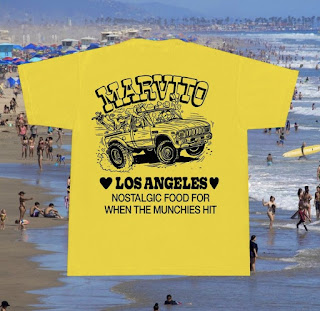FISK research
Fisk is a studio based in Portland consisting of 4 team members; Bijan Berahimi, James Fink, Cole Johnson and Leah Malonado. They have had clients such as Nike, Google and Stones Throw, and have worked on a multitude of projects such as website design, album cover design and publication design. They have a varied range of services consisting of graphic design, print, layout, packaging, motion graphics, web design, apparel design, 3D, type design and copywriting. The studio was founded at CallArts in 2009, moving from LA to Portland. Fisk primarily operates as a graphic design studio, but it also functions as a community hub and a contemporary art gallery. For the last 6 years, FISK operated as a combination of a design studio and art gallery with a 'focus on product collaboration'. The studio is now currently reshaping its business model, as they realised they want to blend all of their elements together.
Members:
Bijan Berahimi, James Fink, Cole Johnson and Leah Malonado.
Publication design
Studio environment
Branding
Gallery merch
Nike
Hypertext
Designers Lizzy Gershenzon and Travis Kochel are a type design duo based in New Zealand, forming the studio Scribble Zone; exploring the type industry and the community within it, they created Future Fonts - an experimental platform for in-progress fonts. Future Fonts is a place where feedback, discounts and free updates are welcomed, in support of up and coming designers within the type scene. Lizzy and Travis' platform has helped 40 independent foundries launch 69 fonts from 22 countries; in celebration of this, the duo reached out to Fisk to create a snapshot of Future Fonts' releases in their first year.
Fisk wanted to created something that was 'part type specimen and part art piece'; taking on the form of an interactive website, Hyper Text pushes the 'limits of absurdity'. With an incredibly playful user experience, the platforms' 69 fonts are spread across the website, showcasing each fonts personality traits with animation. Fisks' founding designer Bijan Berahimi notes how the project is an 'extremely ambitious and atypical challenge for us to showcase 69 different fonts within a single project'. 'To ground the project, we explored overlooked cultures with an abundance of type, and utilitarian design'. With a bundle of bespoke personalisation to highlight the uniqueness of the project, Hyper Text is an 'easter egg hunt of typographic delights'.
Album art
Its Nice That
JOON
Bijan Berahimi has worked on a somewhat personal project as part of Fisks' portfolio, titled Joon. Over the past few years, Berahimi has become more engaged in his Iranian heritage, and has been trying to integrate this into his design practice. Berahimi notes that 'simply naming the project Joon is a dedication to my parents and my heritage'; in Farsi, 'Joon' translates to 'life' and is used as a term of endearment and an expression of intimacy.
Berahimi graduated from CalArts in LA and then moved to Portland, and the term Joon captured the sense of community he experienced after moving. The publication explores his life in the city of Oregon so far; using a dynamic layout and a diverse use of materials, the publication uses a range of colours typefaces which 'yo-yos' to provide a 'sense of awe in the multiplicity of design systems'.
Joon started out in 2019 with an inquiry from fellow Portland friends at Brown Printing. Brown Printing is a family run business which has been running for 80 years, and the companies have been working closely ever since.
Berahimi hopes that the magazine will have an international outreach, noting how 'Fisk has been going for ten years, and while we are continuously pushing the work we make. It's so refreshing to create a new brand from all the things we've learnt over the past decade'.
Questions:
- What kind of dynamic do you look for when hiring people within a studio?
- Where do you take your inspiration from?
- What is your stance on gatekeeping within the design industry?
- What is your design process?
- How do you create a consistent and strong visual/ brand identity?
- What was your experience like starting out as a freelancer?
- How do you get good connections within the industry?
- Do you feel like social media platforms such as Instagram are more beneficial to designers now? If so, what advice do you have for presenting yourself online as a creative?
- Would you say that having a strong defining style is more important than having a versatile portfolio?
- How do you find collaborative projects and how has your experience been collaborating with others?
- Do you think that the design industry has become too 'trend' based; are designers becoming reliant on heavily stylised and 'trendy' designs? If so, do you agree with designing based on trends?
- 'Create a starter pack for graphic designers in ...'
- Do you think that creative freedom is somewhat limited when working in a studio?
- What is your working environment like?
- What is the process of collaboration like within a studio environment?
- What’s hurdles have you overcome in order to get where you are today?
- What are your ambitions for the future? What are the plans of integrating the FISK gallery into the FISK studio?
- Are you selective with the clients you work for?
- What were your decisions behind setting up a studio rather than freelancing? What are the pros and cons of both and if so what have your experiences been like as a freelancer?
- What kind of designers do you look for when hiring for a studio?
- What is the design industry like in LA, and why did you decide to move to Portland?































No comments:
Post a Comment